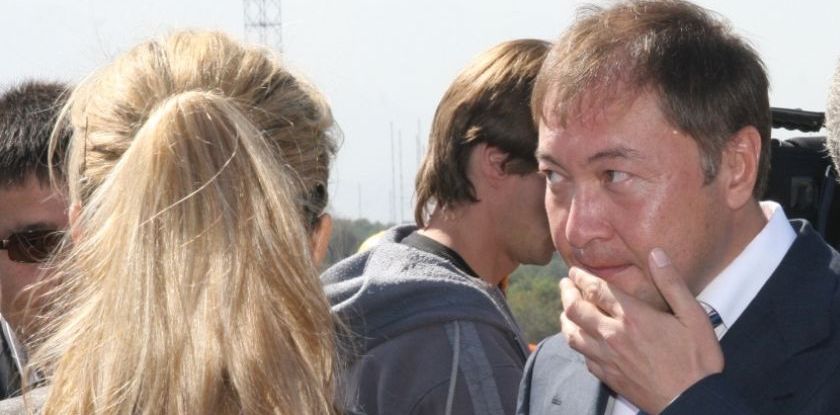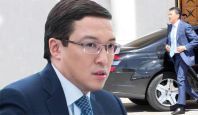The search for the assets purchased by the old Kazkommertsbank’s team using the means of the bank is promising to become a global operation. And not only from the geographic standpoint.
At the end of July 2018, they signed the Delivery and Acceptance statement, the document that made Halyk Bank the owner of all the property, rights as well as the liabilities of Qazkom (commonly known as Kazkommertsbank).
One would think this would put an end to the story of one of the vanguards of the Kazakh financial system. However, as it turns out, this was just the first act of the play. The second act was bound to follow, and its plot has acquired a new, even more intricate nature. In a nutshell, it is a story of the search and expropriation of the assets bought back in the day by the old Kazkommertsbank’s team that had taken advantage of the bank’s means while shopping for the said assets.
We will recall that, in 2009, the owners of Kazkommertsbank, unlike BTA Bank’s owner, chose not to show resistance and let the state’s and other investors’ money in their business. Now it looks like they will have to take the responsibility not only for the old “sins” made at the time of the independence but also for the recent ones that can now be classified as “independent action”. We are talking of nothing less than withdrawing the state funds deposited to the bank as part of the state support program.
Halyk Bank’s Chairperson Umut Shayakhmetova has already made unreserved admissions on her “surprise as to how great the level of the problem loans was”.
The next (and unavoidable) step is acknowledging these problem loans as the “funds withdrawal”. And this would serve as a door to opening a criminal investigation with all the consequences that come with it.
The fact that the operation against the old Kazkommertsbank’s team has started can be confirmed by the existence of the already formed body of evidence. The Western press has published the materials that describe rather explicitly who invested the funds and where they were invested. The nature of the publications and the sources they cite ensure the factual accuracy. The materials manage to prove the existence of the ties between Qazkom and its affiliated legal and physical bodies.
The Global Meridian
In November 2017, the publication based on the confidential documents from the archives of the Appleby legal firm located in Bermuda showed that, even after the bank’s de-facto nationalization, the partners of the Meridian private equity fund, an offshore structure whose lineup, to a large extent, overlaps the team of Qazkom’s creators were involved in the developing of the bank’s strategy.
The authors of the investigation published on the OCCRP website (The Organized Crime and Corruption Reporting Project) state that Kazkommertsbank was used for providing “easy” loans that had turned Meridian into an empire that spreads from the US to Europe, Africa, Asia and even Australia.
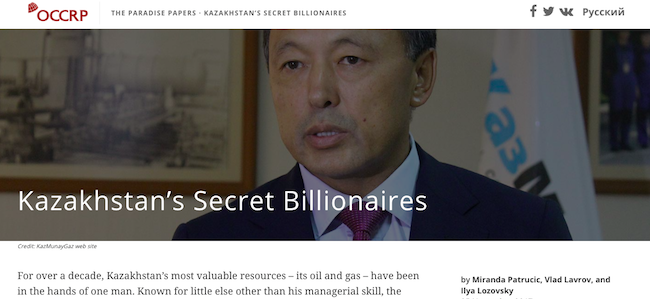
The authors of the investigation reach a conclusion that the beneficiaries of the Meridian/Kazkommertsbank tie, having used the bank’s funds, managed to receive several rounds of the state financial support. In 2010, the amount of the state aid constituted $1.4 bln. Then, after the change of the ownership, the bank received another $7.5 bln. Sounds like a ready-made wording of the future sentencing.
Ultimately, the existence of the personal links between Meridian and Kazkommertsbank has never been a secret. However, against the backdrop of the bank’s acquisition, this link is starting to play out in fresh colors. Now all the Meridian investments, we believe, will be a priori considered as the withdrawing of the bank’s funds.
The Meridian Capital Fund was founded at the beginning of the 2000s in Bermuda by the top-managers of Kazkommertsbank, Kazakhstan’s largest bank in terms of the size of the assets. Apart from Askar Akshinbayev (about 48%), its majority shareholders included Evgeniy Feld and Sauat Mynbayev who also worked at Kazkommertsbank. The name of another shareholder, Ian Connor, was not commonly known.
Sauat Mynbayev was the main protagonist of the OCCRP publication. According to the registration data, starting from 2002, he has been controlling about 20% of Meridian Capital Ltd. The authors of the investigation believe that Mynbayev’s participation was one of the drivers for the growth of the entire group because it coincided with his advancement in the state structures responsible for the managing of Kazakhstan’s oil-and-gas industry.
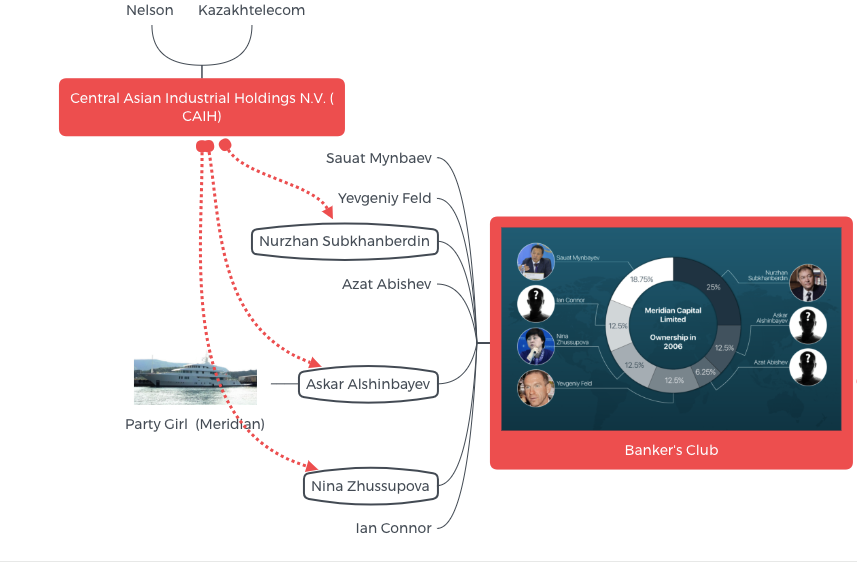
The Union of Milk, Oil and the Russian Real Estate
According to the publications in the Western media, the main operations of Meridian Capital’s partners beyond the Kazakh borders can be divided into the three major groups:
- the real estate deals in Russia (in Moscow and St. Petersburg);
- creation of the Russian regional airports’ operator;
- investments in the New-York real estate.
But the reality may not be as simple. The first two groups can be considered as a transitional stage – the money from Kazakhstan was invested in the Russian projects and then transferred to the West.
Meridian Capital first became known for its investments on the Russian market. But the general public became familiar with it already after the fund had started exiting the Russian projects which happened after the change of Qazkom’s ownership and the receipt of the state money.
This fund was behind the sale of the Galerea shopping center in St. Petersburg in 2012 for $1.1 bln. It was the biggest operation on the Russian real estate market. This shopping center has literally made it into the history of St. Petersburg.
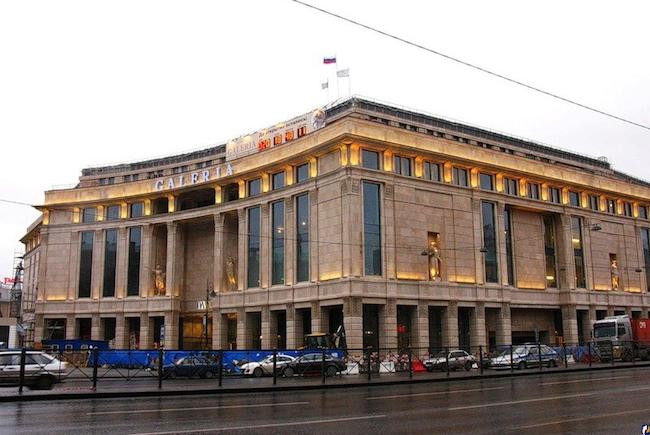
The construction pit at Vosstaniya Sq. in the center of the city was made as early as 1997. It was intended for the building of a high-speed railroad. However, the project failed after which the pit was transferred from hand to hand several times. It found itself in the hands of Meridian in 2006.
In January 2009, at the peak of the crisis, the pit was visited by Valentina Matvienko, the then Governor of St. Petersburg. After this, the builders received a loan in the amount of $338 mln. Head of Sberbank German Gref made a personal appearance at the opening of the Galerea shopping center in November 2010. And all the Russian business community was trying to guess how the unknown firm had managed to get and realize (with the aid of Russia’s biggest state-owned bank) such a large-scale project.
It was then when the public noticed the “union between dairy and oil” – the two industries in which the official owners of Meridian Capital had been taking part. We are talking about two companies – Nelson Resources of Kazakhstan and Unimilk of Russia. At the time, the fund was thought to have been connected to Timur Kulibayev, the main beneficiary of the Kazakh oil industry, but no proof of this theory had been presented.
Meanwhile, it is difficult to deny the connection between the dairy business, Kulibayev and Nelson. And, by the way, Meridian’s dairy connections exist even today. Of course, now they enter the industry through the Western jurisdictions that have only the historical ties with Russia. The investments in European dairy processing and Food Union ice cream group can serve as an example of this.
The Food Union Group unites the leading ice cream producers from several countries – Rīgas piena kombināts, Valmieras piens and Rīgas Piensaimnieks of Latvia, Premia of Estonia, Premier Is of Danmark, Isbjorn Is of Norway, Alpin57Lux of Romania and Ingman Ice Cream of Belarus.
Investments in Food Union
The interest in the dairy industry had often accompanied Meridian’s owners’ keenness on real estate. Especially if the dairy plant they were purchasing was located on a vantage ground that could be used for the housing and office building development.
The story of dairy plant Petmol unfolded in exactly this manner. The plant was located on the corner of Moskovskiy Avenue and Obvodnogo Kanala Embankment in St. Petersburg. In 2008, the plant joint Kompaniya Unimilk PC co-owned by Meridian Capital. After the purchasing, Petmol was moved to the Parnas industrial park. The plant’s former territory was passed into the ownership of Meridian Capital CIS Fund. On this territory, they were going to build two complexes – a residential complex (on the corner of Varshavskaya St. and Krasutskigo St.) and an office complex (inside the square of the stockyard).
In February 2012, they started demolishing the industrial buildings, however, the construction process was stalled. On the other hand, at the beginning of 2017, a new participant joined the project. It was Kazakh development group BI Group owned by Aydyn Rakhimbayev. Its representatives stated that Meridian would remain the owner of the land while BI Group was to become an investor and a subcontractor.
Russian newspaper Vedomosti did not see any hidden agenda in this statement. Moreover, they announced with confidence that BI Group was preparing to create a joint venture with Meridian to be able to carry out joint projects in the amount of about US $500 mln in Russia. The partners’ shares in the enterprise were to be equal.
We should note that it was the Rakhimbayev people who made the announcements on the subject. The representatives of Meridian refused to comment. And, probably, had their reasons for that. As a result, the project never materialized. And, at the end of July 2018, the public learned that the rights for this project had been purchased by Russian holding Legenda Intelligent Development. The reason for the failure mentioned in the Russian media was the quarrel between the Meridian partners with BU Group.
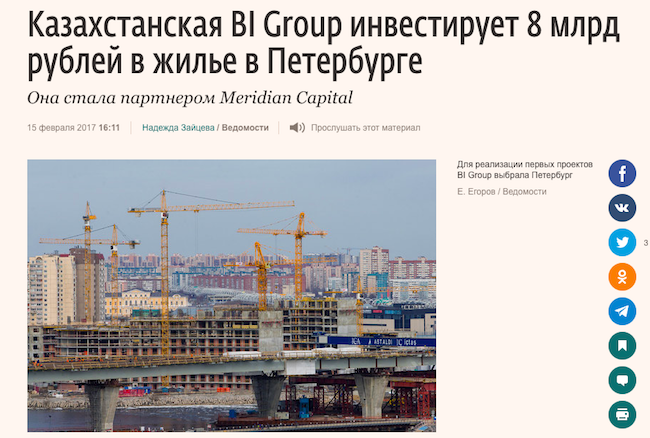
Note that the “divorce” was happening against the backdrop of Kazkommertsbank’s own acquisition that occurred with Kenes Rakishev’s most active participation. Although, according to the information we received, the business interests of Rakishev and BI Group’s owner Aydyn Rakhimbayev do not cross. At the same time, Kenes Rskishev is actively involved in ANA ҮЙІ – a charity project organized by Rakhimbayev in February 2016 aimed to close all the orphanages in Kazakhstan. Both entrepreneurs are also involved in the organization with a rather exuberant title - YPO (Young President’s Organization).
Coming to Manhattan
The Kazakh well-healed partners entering the US real estate market had caught the eye of the professional real estate observers because the company was involved in the most complicated projects from the regulatory standpoint.
There was, for example, the renovation of a residential area in Manhattan. The investments were made indirectly, through the Extell corporation. According to The Real Deal data, Meridian invested about US $200 mln in these projects.
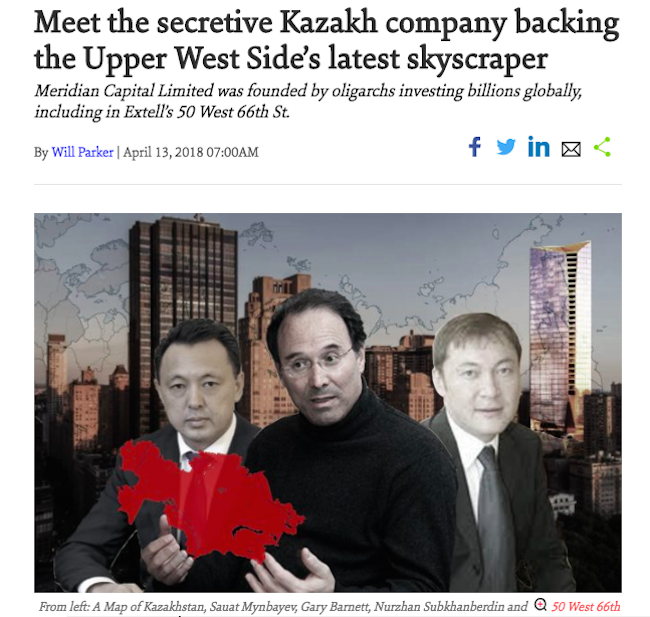
The first deal was made back in 2011, already after Kazkommertsbank had received the state funds. At that time, company Bremsten Finance affiliated with Meridian purchased the mortgage loan given to a building located at 16-18 West 57th Street previously bought by Extell.
Then, they bought the loans given to the development projects at 3 West 46th Street and 570 Fifth Avenue.
And, in 2017, the Hong Kong branch of Meridian purchased the share in Extell’s project to build the condominiums in a tower located at 50 West 66th Street.
All these deals, TRD believes, had made Meridian the biggest shareholder in the corporation and New York’s biggest Kazakh investor. Among those publicly known. Note that all the mentioned addresses are situated in Manhattan.
We should note that this refers to the projects of Gary Bernett, the owner of Extell who, within a space of few years, became a top developer in the US business capital. The peculiarities of Barnett’s biography and career are presented in an essay with a rather symbolic title “Anti-Trump” published in the New York magazine in October 2010.
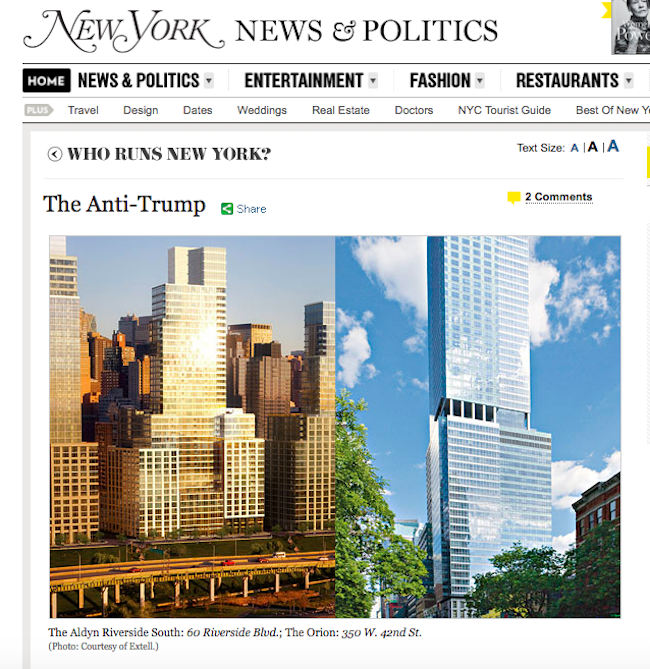
On the other hand, the title of the article does not have any political undertone. The article talks about the business strategy of New York developer Barnett who, unlike the future US President, was trying to avoid the spotlight preferring to operate quietly.
Once upon a time, Gary had a different name. Named Gershon Svyatitsky at birth, he spent his childhood in a Jewish Orthodox family living in the Lower East Side, the historic center of petty trading and financial speculations. So, Gary received his education not at Harvard or Columbia but at the local colleges. But Svyatitsky’s life changed dramatically after his meeting in Florida with Evelyne Muller, the heiress of the family fortune of diamond traders from Antwerp. Barnett, too, soon relocated to Belgium. The US became a new marketing outlet for the Antwerp family.
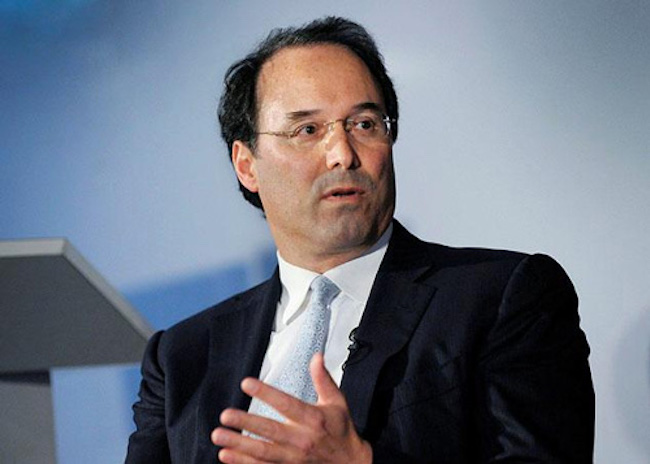
At the beginning of the 1990s, the Belgian diamond traders started thinking of diversifying the business. Barnett came in quite handy since he soon started to buy office buildings and shopping centers for them. At the time, these purchases were made in the Mid-West cities and did not catch much attention of the public. However, in the middle of the 1990s, Barnett raised the bets. He started promoting the projects in New York, a very complex city from the development business standpoint.
The thing is that, despite its status of the hard cash world’s capital, New York has a highly-regulated real estate rental market. Apartments are rented on condition of the fixed payment. Rents can be raised only to a limited extent. Therefore, the old rental contracts are valid throughout decades and reflect the prices of the “old New York”. The new projects inevitably cancel these obligations and, as a rule, can cause conflicts with the tenants who do not want to change anything.
The readiness to work with such situations was the developer’s trademark. For this reason, he very soon became a bright star at this complex market: he was capable of demonstrating not just pretty pictures but the realized projects to the investors. Apart from being prepared to operate under the conditions of the complex and intricate regulation (there had been instances when Barnett would lose in courts and would be deprived of the property following the claims of the municipal authorities), the developer had the talent to find the money and figure his way out of even most difficult a situation. It was this quality that served as his biggest comparative advantage at the New York big real estate market where billionaires may very soon go bankrupt even if the projects they promote may be excellent.
In the opinion of the expert community, it was the connections with the investors that allowed Barnett to survive the 2009 crisis and relatively easily, too. The investments by the unknown European partners had eased the pressure on the part of the creditors and allowed to keep the real estate without much loss. This kind of survival looked especially successful against the backdrop of the crisis that had buried many competitors of the developer.
It is interesting to note that, both in Russia and the United States, the Meridian projects had turned out to be able to withstand the aftermath of the crisis. But, if, in Russia, it was Sberbank that rushed to the rescue, then, in the US, the help came from Kazakhstan. And the artfulness of the financial operations cannot but astound one.
Big Pocket Money
Based on insider information, by the year 2014, following BTA Bank’s purchase, the group of Qazkom beneficiaries had received about a billion dollars. The money can be considered a “compensation package”. However, the Meridian partners did not limit themselves to investing in big projects. They would also buy yachts, hotels, villas. Only nominally, can these be regarded as investments.
From the macroeconomic standpoint, creating such businesses means exporting the capital from Kazakhstan and (now) from Russia. This export has to do with the simple desire to keep the funds in the safe jurisdictions. At the time of Kazkommertsbank’s foundation and development, the very idea of such export would seem absurd.
Kazkommertsbank was founded at the beginning of the 1990s by the young people who (not without basis) were aspiring to play a serious role in the building of the future of Kazakhstan. The bank was an indispensable step on this way. It allowed, in a relatively civilized fashion (with allowance for the time), to solve the problem of the original accumulation of capital. These were the loans given to purchase the assets. The inflation of the national currency had devalued the loans but augmented considerably the value of the key assets. So, the national elite was to return the funds to the state and the society in the form of new projects and jobs. However, this attempt had failed. And the reason lies not only in the efforts to export the capital from the country.
In the current economic realia, Kazakhstan no longer has an operative credit system. The banks have become an element of the financial system controlled by the state. And this system is engaged in distributing the budget and the “near-budget” resources. In essence, this is repeating the Soviet financial system.
This is the result of the evolution of the national credit system that became suppressed by the state. Then the responsibility of funding the banks was given to the state budget. The state had also taken upon itself the risks that increased dramatically following the appearance on the non-market funding sources. Essentially, for several years, the banks had remained under the private ownership but were completely dependent on the support of the state.
It is a well-known fact that the state cannot effectively monitor but it can effectively punish and may engage in this process indefinitely, until the destruction is complete. In essence, the system formed does not leave any room for choice to the independent financiers which leads to the escalation of the conflict and the further losses.
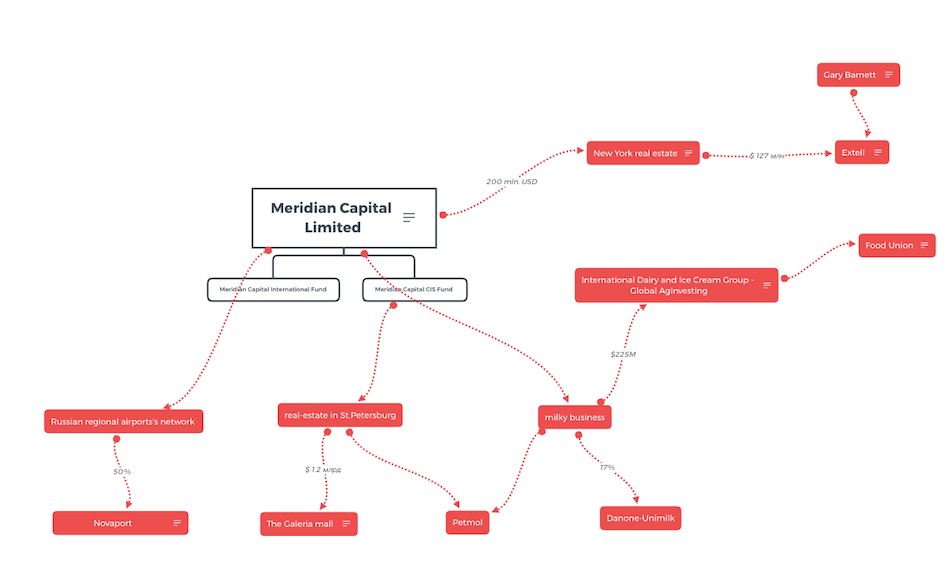
Meridian's Commercial Project: a Chart

